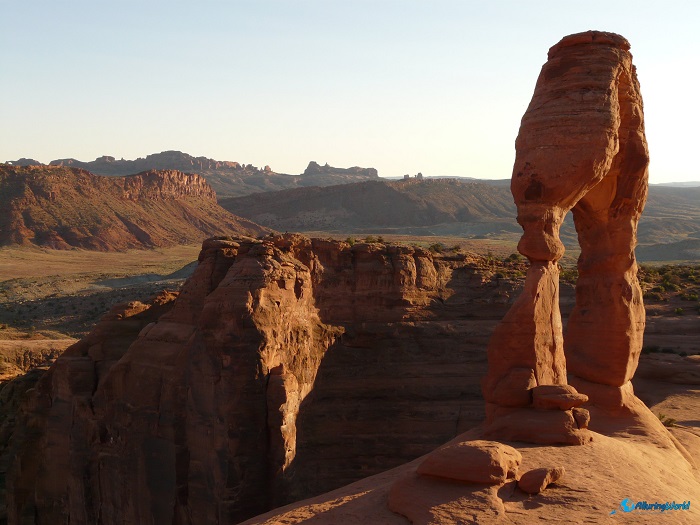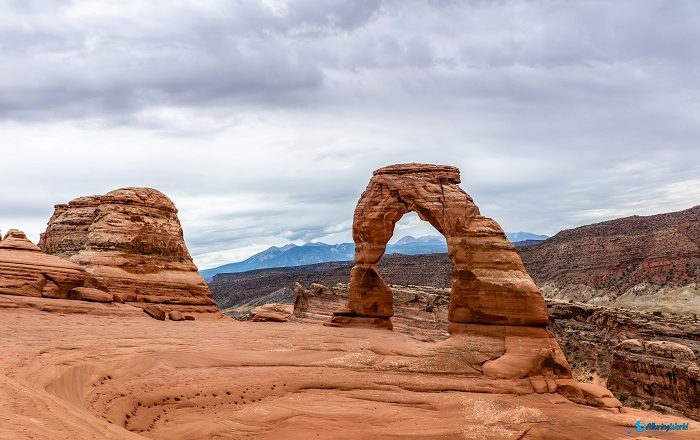The Delicate Arch is a striking natural arch that is considered one of the most iconic natural landmarks that can be found in Arches National Park, adjacent to the Colorado River, in the eastern part of the State of Utah, within the western part of the United States of America.
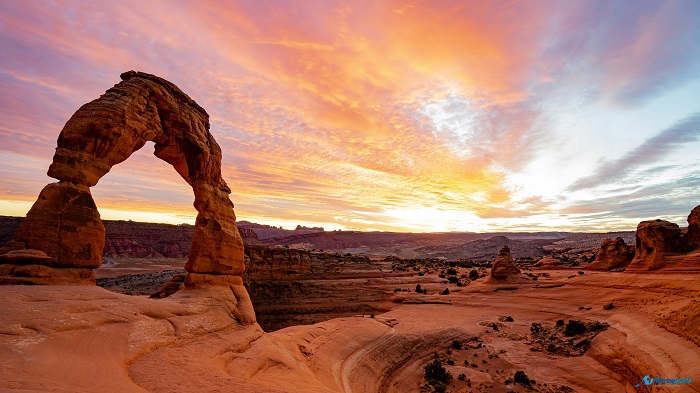
This incredible natural creation stands as a testament to the forces of nature, capturing the imagination of visitors from around the world with its graceful, freestanding form, and as it is situated in the high desert of eastern Utah, approximately 32 km (20 mi) north of the town of Moab, Delicate Arch is not only a symbol of Utah but also an emblem of the American West.
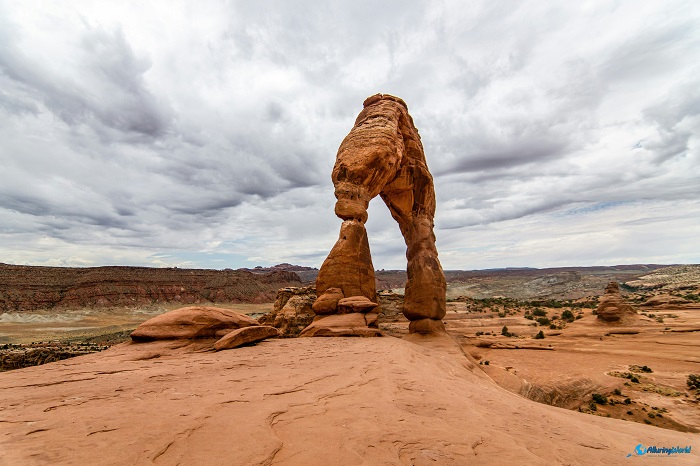
The Delicate Arch is the result of millions of years of geological history, where the arch, as well as most of the other rock formations in Arches National Park, is made of Entrada Sandstone, a rock type that was created from ancient sand dunes of more than 150 million years ago.
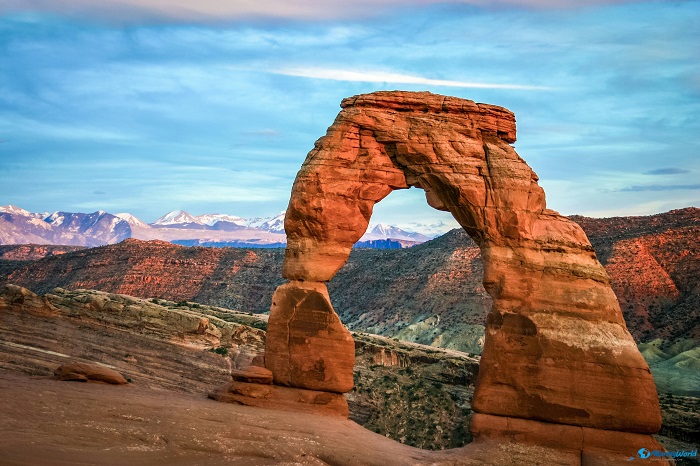
The unique shape of the Delicate Arch was created through a combination of erosion, weathering, and the natural processes of expansion and contraction caused by temperature fluctuations, but over time, wind, water, and ice slowly wore away the softer parts of the sandstone, leaving behind the harder, more resilient rock that forms the arch we see today. The arch stands 18 m (60 ft) tall and spans 14 m (46 ft) across, making it one of the largest and most visually striking arches in the park.
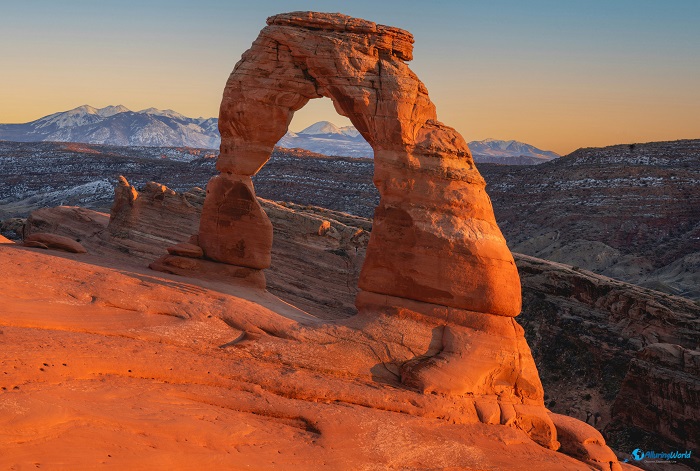
Holding great importance, both as a natural wonder and as a cultural symbol, it has become an iconic image representing the beauty and majesty of the American Southwest, featured on countless postcards, and photographs, and it is even featured on Utah’s license plates.
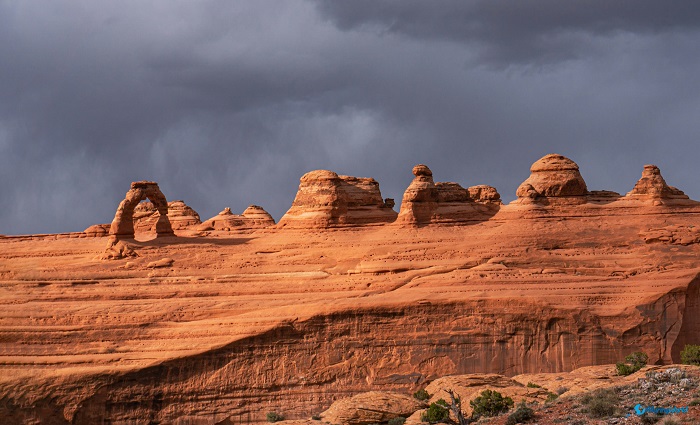
The arch is a popular destination for hikers, photographers, and nature enthusiasts, drawn by its beauty and the challenging yet rewarding trek to reach it, in addition to all this aesthetic appeal, the Delicate Arch has also historical significance since nearby some historic petroglyphs can be found etched into the rock by the Ute people, who lived in the region centuries ago. These petroglyphs show horseback riders, providing insight into the lives of the early inhabitants of the region.
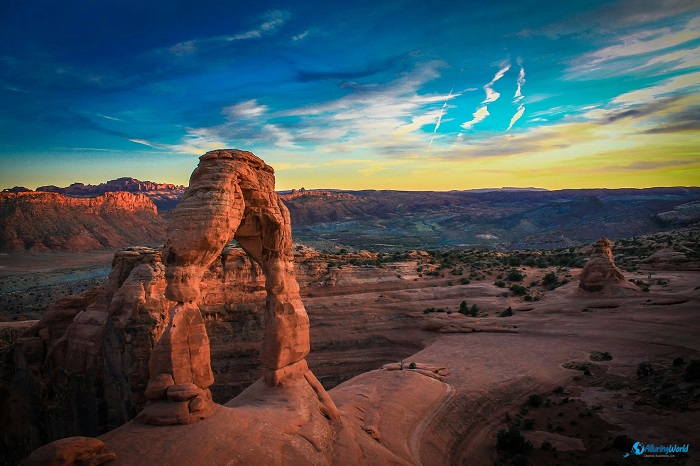
As mentioned above, the Delicate Arch is now one of the most popular attractions within Arches National Park, so the preservation of the arch as a natural monument helps to safeguard it for future generations, and in 1929 when the park was established, it was designated as a national park in 1971.
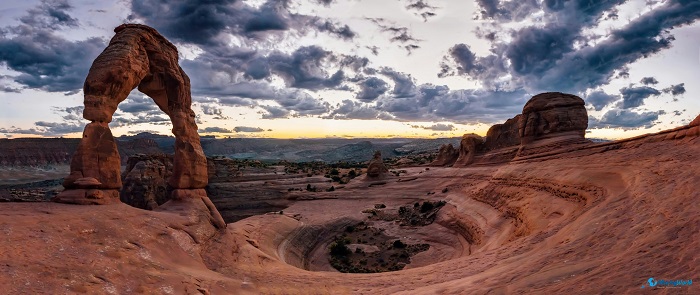
The park spans more than 310 sq km (119 sq mi) and has more than 2,000 natural stone arches and other geological structures. The National Park Service (NPS) is the responsible body for managing and protecting these natural wonders, including the Delicate Arch, by implementing strict regulations to minimize human impact and preserve the fragile desert environment.
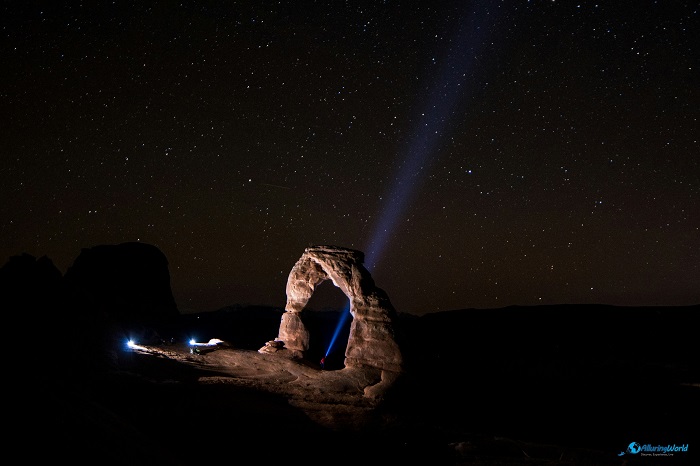
Tourists can view this majestic monument by walking the Delicate Arch Trail which is a 4.8 km (3 mi) round-trip trail that will take from two to three hours to hike, and the trail is moderately difficult, with a consistent rise of 146 m (480 ft) in elevation with parts that cross over slick rock, which can be tricky under hot or rainy conditions. The hike is suitable for most people in good physical condition, but it is essential to be prepared for the desert environment.
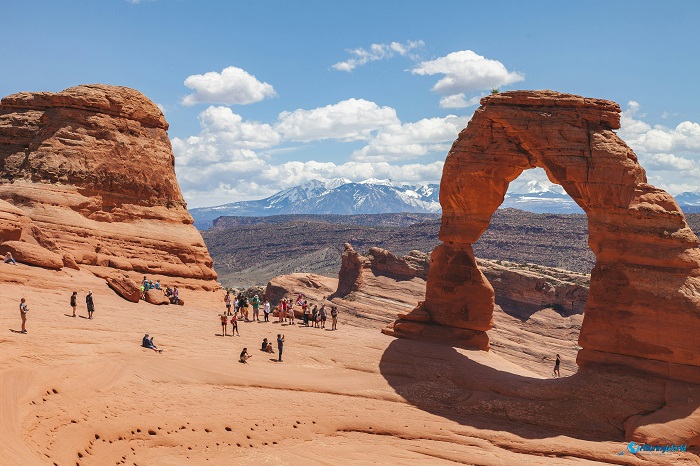
Trekkers must bring enough water, wear strong shoes, and take care of the sun since there is not much shade on the trail, so the best times to go are early morning or late afternoon when the weather is cooler, and the light is good for photography.
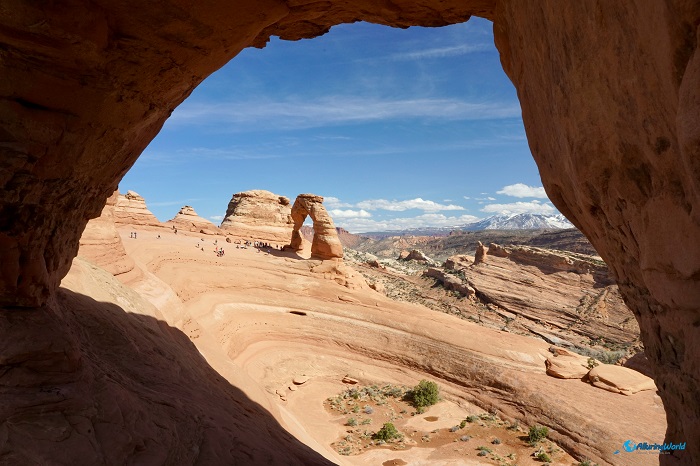
For those unable to complete the hike, there is a viewpoint at the Wolfe Ranch parking area, where visitors can see the Delicate Arch from a distance, this option provides an opportunity to view the arch without the physical demands of the hike, although the experience is less immersive than reaching the arch itself.
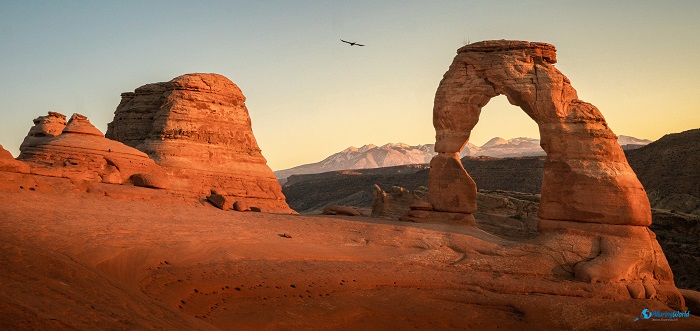
The fragile Delicate Arch is safeguarded under the austere rules of Arches National Park, controlled, as explained above, by the NPS. The park’s rules are designed to preserve the natural beauty and integrity of the landscape, including restrictions on climbing on the arches, disturbing the rock formations, or removing any natural materials from the park, so visitors are strongly encouraged to practice Leave No Trace principles, which include staying on designated trails, packing out all trash, and respecting wildlife and other natural features. These measures are vital to ensuring that the Delicate Arch and the surrounding landscape remain pristine and accessible to future visitors.
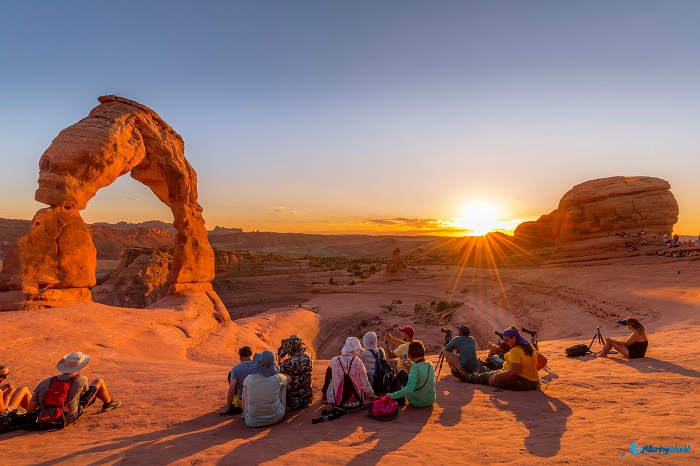
Getting to the Delicate Arch requires a bit of effort, but it is well worth the journey. The nearest town, Moab, is a hub for outdoor activities and provides easy access to Arches National Park, from Moab, it’s a short drive to the park’s entrance, and then a 24 km (15 mi) drive along the scenic park road to the Wolfe Ranch parking area, where the trail to the Delicate Arch begins. The park is open year-round, but the best times to visit are during the spring and fall, when temperatures are mild, and the crowds are smaller, regardless of when one visits, the Delicate Arch stands as a timeless symbol of the natural world’s power and beauty, waiting to be discovered by those who make the trek to see it.
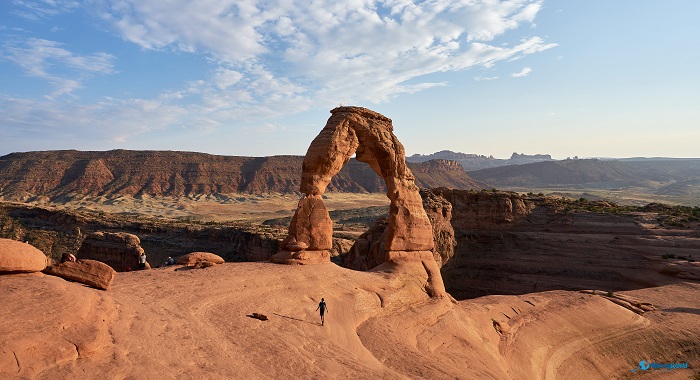
All in all, being a must-see destination for anyone visiting Utah or the American Southwest, this majestic and quite alluring unique beauty, combined with the rich history and geology of the region, makes it an unforgettable experience. Whether you are a hiker, a photographer, or simply someone who appreciates the wonders of nature, the Delicate Arch offers a rare opportunity to witness the incredible forces that have shaped our planet over millions of years. The sense of awe that comes from standing beneath this natural marvel, with the vast desert landscape stretching out before you, is something that cannot be captured in pictures or words alone—it must be experienced in person.
